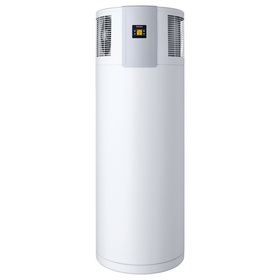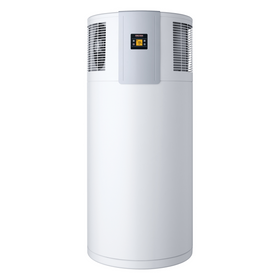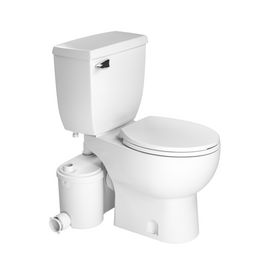
Clotheslines and Clothes Drying Racks Offer a Simple Solution to Save Energy
Last Updated: Feb 26, 2025If you want to take an easy step to reduce your energy consumption and save money on utility bills, look no further than air-drying your clothes. The use of energy-intensive electric and gas tumble driers has become the norm. So much so that we often view air-drying as old-fashioned, unsightly, or we don't even consider the option at all. It's time to reverse course and let the sun and wind dry our clothing.
Air drying systems are among the least high-tech, most logical home products one can own. They utilize the sun and ambient air to dry clothing passively. The market offers a wide array of designs and styles to choose from. You can use these products both indoors and outdoors, depending on your situation and local ordinances. For folks that live in areas where outdoor clotheslines are currently banned, consider an indoor system; they can work just as well.
This article will cover a wide variety of laundry air drying systems beyond traditional clotheslines.
Table of Contents
- What Is a Clothesline?
- What Is a Good Clothesline Pulley System?
- What Types of Clothes Drying Racks Are Available?
- What Are Outdoor Rotary Drying Racks?
- What Are Fold-Up, Free-Standing Indoor/Outdoor Drying Racks?
- What Are Good Fold-Up Drying Racks?
- What Are Wall-Mounted Indoor/Outdoor Drying Racks?
- What Are Some Good Wall-Mounted Drying Racks?
- What Is a Good Indoor Door Mount Rack?
- What Is a Retractable Clothesline?
- What Is a Mesh Drying Rack?
- How Much Energy Does Air Drying Clothes Save?
- How Long Does a Clothesline Last?
- Are There Bans on Outdoor Clotheslines?
- What Are The Pros of Clotheslines and Clothes Drying Racks?
- What Are The Cons of Clotheslines and Clothes Drying Racks?

What Is a Good Clothesline Pulley System?
Lehmans Workhorse Clothesline Pulley System is a USA-made pulley system that homeowners can use for traditional clothesline systems. With this system, you can pull a clothesline cable through the pulleys so you can stay in one place as you clip your laundry to the line.
What Types of Clothes Drying Racks Are Available?
When looking for a way to hang clothes to dry outside or indoors, there are many styles and options. Some of these include:
- Outdoor Rotary Drying Racks
- Fold-up free standing racks for indoor and outdoor use
- Wall-mounted indoor or outdoor drying racks
- Indoor door mount drying racks
- Retractable clotheslines, and
- Mesh drying racks.

What Are Outdoor Rotary Drying Racks?
Rotary racks are sleek options that minimize footprint while maximizing drying space. Some great options we have found include:
- Greenway Bamboo Rotary Drying Rack – This is a fixed system for outdoor use. This rack has an excellent design that minimizes the footprint of the clothesline system and maximizes drying space.
- Greenway Portable Rotary Drying Rack – A portable, free-standing option for rotary drying racks.
- Brabantia Lift-O-Matic Rotary Dryer Clothes Line – A great rotary rack system with a solid warranty
What Are Fold-Up, Free-Standing Indoor/Outdoor Drying Racks?
These clothes drying racks are a great versatile option that you can use both indoors and outdoors. For indoor use of any clothes drying rack, an energy-efficient ceiling fan or bath fan can help speed up the drying process. You can now find ceiling fans and bath fans on Rise.

What Are Good Fold-Up Drying Racks?
- The Pennsylvania Woodworks Drying Rack is a heavy-duty maple wood rack that is more solid than bamboo setups. These racks are handmade in Pennsylvania, USA. This company offers several different sizes. Hardwood is very resilient to moisture damage which is ideal for a laundry drying rack!
- The Household Essentials Bamboo Folding Rack is a cost-effective option made from bamboo that is sourced from China. Bamboo is a sustainable and fast-growing plant, but it's not as durable as hardwood against moisture.
- The Greenway Stainless Steel Foldup Drying Center is a stainless steel option similar to the wood options above.
What Are Wall-Mounted Indoor/Outdoor Drying Racks?
These clothes drying racks can be used indoors and outdoors, depending on the model. They are great options for areas with minimal space where you don't want a fixed system and want to pack it away when finished.

What Is a Good Indoor Door Mount Rack?
The Greenway Door Mounted Drying Rack is a sturdy, stainless steel option that can easily mount to a door without hardware. It folds away when not in use.
What Is a Retractable Clothesline?
A retractable clothesline system is similar to a traditional fixed clothesline setup up. The only difference is it can retract, so you can quickly set it up for use and then retract it once the clothes are dry. To secure clothing to the line, you use clothespins. It's best not to leave clothespins on the line when not in use; store them in a box or back out of the elements. One widely available option in this category is the Riveda Retractable Clothesline system.

What Is a Mesh Drying Rack?
You'll want to lay heavy things like sweaters flat over a surface with airflow beneath like a horizontal rack or mesh-like this system. Bulky clothing like sweaters can sag and stretch with the weight if they are hanging. A good mesh rack we found is the OXO Good Grips Folding Sweater Drying Rack.
How Much Energy Does Air Drying Clothes Save?
On average, electric driers represent about six percent of your home's annual energy consumption. Different models of electric dryers consume a wide range of wattages, from about 2,000 to 6,000 watts. This wattage is equivalent to roughly 2 to 6 kilowatt-hours of electricity and translates to between 24 and 72 cents per hour of electric drying or an average of 50 cents per hour. Gas driers use less electricity but require natural gas, a fossil fuel, for their heat source. The costs add up over time, and that's not even considering the cost of the machine or necessary repairs down the road.
If you use electric driers, a tip to reducing energy consumption and fire danger is always to keep the lint buildup clean. Another tip is to shorten the dryer hose to the minimum length necessary to reach the drier. This step will reduce the energy required to pump out the moist air from the drier. We highly recommend that you opt for ENERGY STAR-rated washers and driers to get the most efficient appliance.
How Long Does a Clothesline Last?
Clothesline products are typically very long-lasting and will vary depending on the brand and quality that you choose. There's virtually no maintenance, no electronic components to break down. Even if it does break and you can't fix it, it's affordable to replace.
Are There Bans on Outdoor Clotheslines?
In most areas, clotheslines are legally permitted and very common. Some housing developments and jurisdictions have attempted to ban clotheslines; however, the controversy surrounding this has often resulted in the lifting of these bans. Be sure to check local ordinances and laws before utilizing an external clothesline drying system.

What Are The Pros of Clotheslines and Clothes Drying Racks?
You will save in energy bills from reducing your use of electric or gas tumble driers. Air drying is much gentler on fabrics than a tumble drier. The combination of heat and tumbling wears away at the strength of fibers. In synthetic fibers like polyester, this will result in microplastics shedding into waterways.
Air drying won't shrink your clothes as heated tumble driers can. Sunlight can kill bacteria odors on clothing. You can even sun bleach white clothing in direct sunlight.
In the summer, when the house is hot, running a drier does not make much sense. It makes the most sense to use the outside heat to dry your clothes instead of creating more heat in your home.
In the wintertime, you can move your exterior operation indoors. Check out our article on how to dry your clothes during the winter.
Shop All Special Offers
Shop Special Offers on vetted Home Improvement products at low prices while supplies last.

Stiebel Eltron Accelera 300 E Heat Pump Water Heater
Stiebel Eltron
Out of Stock

Victory Range Hoods Sunset 600 CFM White Flush Ceiling Mount Dimmable LED Range Hood
Victory Range Hoods
In Stock

Victory Range Hoods Sunset 600 CFM Flush Ceiling Mount Dimmable LED Range Hood
Victory Range Hoods
In Stock

Stiebel Eltron Accelera 220 E Heat Pump Water Heater
Stiebel Eltron
In Stock

Quickscrews Cabinet Install Screws
Quickscrews
In Stock

Victory Range Hoods Horizon Matte White Flush Ceiling Mount Range Hood with Dimmable LED Lights
Victory Range Hoods
In Stock

Saniflo Sanibest Pro Combo Macerator System
Saniflo
In Stock

Blanco PRECIS Super Single Undermount SILGRANIT Kitchen Sink
Blanco
In Stock
9 Colors

Blanco PRECIS 30 Undermount Single Bowl SILGRANIT Kitchen Sink
Blanco
In Stock
9 Colors

Hauslane Chef 36" UC-PS18 860 CFM Ducted Undercabinet Range Hood
Hauslane
In Stock
2 Colors
What Are The Cons of Clotheslines and Clothes Drying Racks?
Air drying clothing often takes longer than a tumble drier. The time needed will depend on temperature, humidity, and wind. Expect 2 to 4 hours on a moderately warm day. To speed up the process, you can use your washing machine's fastest spin cycle to remove as much water as possible before stringing up the clothing to dry. A front-loading washer typically has much shorter spin cycles than a top-loader.
If you air-dry clothes indoors, it can add some humidity. If you are in a space where dampness is an issue, you will want to stick with outdoor drying or ensure proper ventilation.
If you or someone in your household suffers from allergies attributed to pollen, keep an eye on pollen forecasts in your area on the days that you dry your clothing outdoors. This step is typically only an issue in springtime.
Sun can fade dyes; it's typically best to dry clothing in partial shade and not always in direct sunlight. White clothing is the exception here.
Sometimes exterior dust can gather on fabric dried outdoors, or clothing can be slightly stiff after it dries. An easy fix is to toss it in the drier on 'no heat' and run it for a few minutes to soften up the clothing and pull off any dust.

Reducing our energy consumption is essential to our health, wealth, and the wellbeing of the planet. Air-drying clothing just makes sense. It saves money, lowers your environmental footprint, and is not difficult to do. Before you toss your next load of laundry in the drier, think twice, and consider switching to air-drying methods whenever possible.
Tom Saxton
Based in Washington State, Tom's education focuses on holistic land management that sustainably grows renewable building materials in a way that replenishes natural systems. His interest is in building systems that combine old techniques and modern science.


